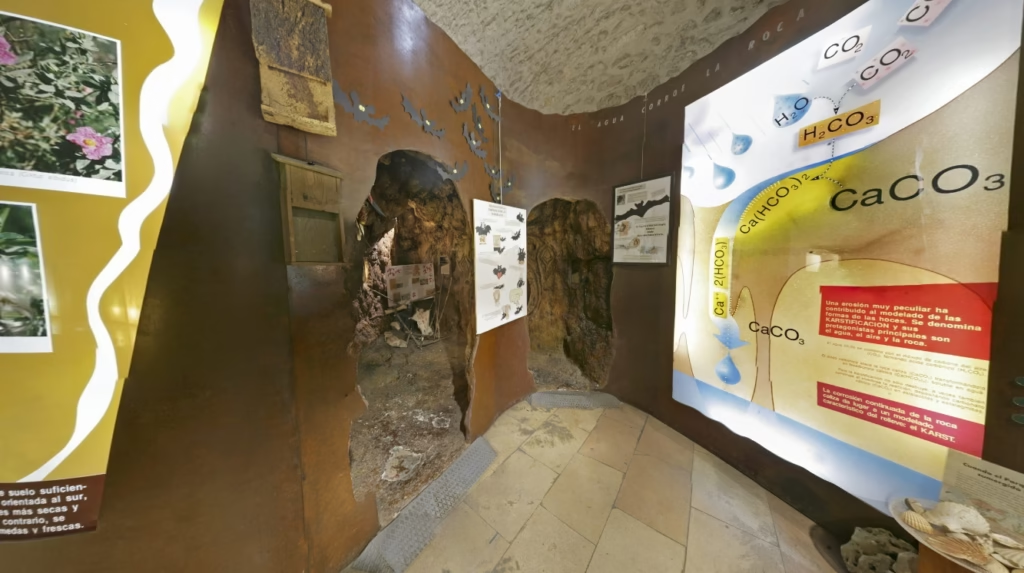- Region: Castilla y Leon
- Province: Segovia
- Declared a Natural Park: 1989
- Park surface area: 5,037 hectares
- Towns and villages Carrascal del Río, Sebúlcor, Sepúlveda
Points of interest
The relatively small Hoces del río Duratón Natural Park is a jewel in the countryside in the province of Segovia. Its name refers to a 27 kilometre stretch of the Duratón River and “Las Hoces” refers to the series of gorges, some up to 100 metres high, that have been formed by the river..

The cultural heritage of this area also makes it an important tourist and leisure destination. The hermitage of San Frutos and the monastery of Nuestra Señora de la Hoz are well visited monuments.
Find a hotel close to the Hoces del río Duratón Natural Park
[booking_product_helper shortname=”hoces del río duratón natural park (segovia)”]
Flora
In the protected area there are varied habitats depending on the climatic and soil differences. Three different and determined zones are distinguished, the moorland in the upper zone, the riverside forest on the river bank and the gorge cliffs.
The moorland zone, which occupies most of the surface of the park, is located in the upper zone, where the soil is dry and poor. Here we find junipers, thyme, gorse, sage, lavender and other scrubland polants that dominate the open areas.The junipers have been greatly affected by human action and clearing have been replaced by thyme and gorse that have come to form a kind of pseudo- steppeland. In some areas there are resin pine plantations although today they are practically abandoned.

At the bottom of the canyon the riparian ecosystem holds richer soils, a greater availability of water and shelter provide an excellent habitat for an exuberant riverside forest made up of alder, willow, poplar, elm, and ash trees mixed with dogwood, elderberry, blackberry, wild rose, blackthorn and hawthorn. There are also planted stands of fast-growing poplars, walnut and chestnut trees.
Fauna
Birdlife is well represented in the area especially the nesting colony of Griffon vultures with over 500 pairs and many other raptors. The river gorge is a haven for many types of warbler, kingfisher, dipper, woodpecker and finches.
Larger mammals present are otter, wild boar, roe deer and badgers accompanied by the smaller weasel, rabbit and stone marten.
Among the amphibians there are common frog and San Antonio frog, common toad, midwife toad and natterjack toad. Common reptiles seen are viperine snake, ladder snake and ocellated lizard. See more information about reptiles and amphibians in Spain here.
Other sites of interest
El Solapo del Águila, in the Corral de Muñecas has the highest concentration of cave paintings.
The hermitage of San Frutos is located on a rocky spur over one of the gorges, and the monastery of Nuestra Señora de los Ángeles at the bottom of the canyon. Also interesting to visit are the ruins of the Visigothic hermitage of San Julián, excavated in the rock and the cave of the Seven Altars.
Not to miss viewpoints (Miradors)
- Mirador de la Virgen de la Peña, in Sepúlveda, next to the church of the Virgen de la Peña, with information panels.
- Mirador del Meandro, on the road to Villar de Sobrepeña .
- Postigo de la Perejilera viewpoint, near the town of Sepúlveda.
- Mirador del Portillo, with views of the Monastery of Nuestra Señora de los Ángeles de la Hoz.
- Viewpoint of the Paso de la Glorieta, near Sepúlveda.
Information/Visitors Centers
The interpretation center of the Hoces del Río Duratón natural park is located in the town of Sepúlveda. It is located in the old church of Santiago, in ruins since 1930, which was restored and adapted for this purpose in 1994 . There is an audiovisual room plus an excellent exhibition covering many aspects of the fauna and flora and human habitation/history of the area.

This is also where you get any permits to visit some of the resticted areas of the park.
official website for the Hoces del río Duratón Natural Park
https://www.turismocastillayleon.com/es/rural-naturaleza/casas-parque/casa-parque-hoces-rio-duraton
Ronda Today
Everything you need to know before you visit Ronda “The city of dreams” in Andalucia. https://www.rondatoday.com/
Visit Cádiz
Planning on visiting Cádiz? Tourist information. Monuments. Hotels. Activities. City guides: https://visitingcadiz.com/
The Caminito del Rey
Find tickets for the Caminito del Rey
Wildside Holidays – Spain
Take a trip on the Wildside! Discover the wildlife and nature of Spain, its Natural and National Parks and find the top wildlife, activity and walking holiday companies.
Iberia Nature Forum
Struggling with identifying those bugs and beasties? Why not check out the Iberia nature Forum! https://iberianatureforum.com/
I’ve been living in this lovely area of Western Andalucia for the last 20 years or so and dedicate most of my time to the running of English language tourist information websites for the towns of Cádiz, Ronda, Grazalema, the famous or infamous Caminito del Rey, and also Wildside Holidays, which promotes sustainable and eco-friendly businesses running wildlife and walking holidays in Spain. My articles contain affiliate links that will help you reserve a hotel, bus, train or activity in the area. You don’t pay more, but by using them you do support this website. Thankyou!

